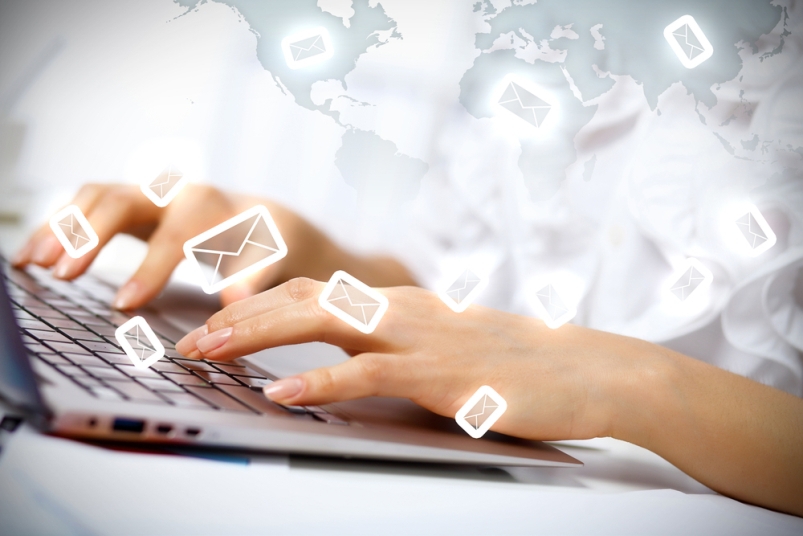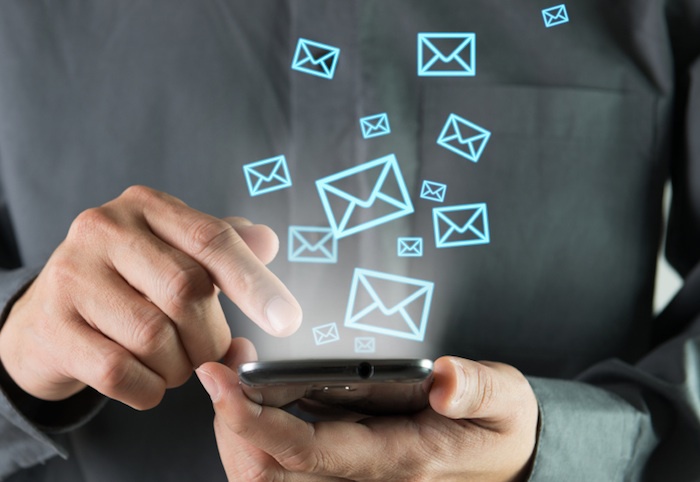12 tips on using email to increase personal productivity

For most of us, e-mail is a real time killer, while many still don’t understand that the more we use it out of habit, the harder it is to control. In this article, David Finkel, will tell you how to increase personal effectiveness by taking control of mail usage .
What do you think ruins productivity most of all? Over the past 24 months I have asked this question to thousands of businessmen, and in one case out of three it was an email.
')
Before you are 12 "life hacking" that will help improve personal efficiency, taking control of the use of mail.
1. Email is addictive, so avoid the first rush to check it. As soon as you decide on a quick look, consider that you have stepped into the abyss. One hundred percent that you will spend more time than expected, because you must decide to answer letters.
The best way to avoid this is to refuse to check incoming emails for certain periods of time.
Having realized that each opening of “inboxes” is a waste of more time than planned, use the following method: during the main work, keep a couple of windows open for writing e-mail - in this case you will not need to enter the program at all.
Also follow the tips below.
2. Set clear frames and stick to them. To improve productivity, plan your day so that there are not too long breaks, during which you will mindlessly open and close your email. Opening it once, you will definitely do it again twenty. Maybe it would be better to take this time with some useful work, but to leave some time for checking e-mail?
For example, I do not open an e-mail every Tuesday, Thursday and Friday until 11 o'clock, it gives me 2-3 hours of extra time and allows, in turn, to have more time.
What days and what time you make free from viewing the mail? Mark this in your organizer as a mandatory event. Tell your team what you are doing, and why, infect them with your example to increase company productivity .
I highly recommend choosing the first half of the day for this, when you just arrived at the office. Turning to the experience of our customers, I can say that if you check your mail immediately, there will be a lot of urgent matters that you could wait 2-3 hours if you didn’t know about them.
3. You need to understand that every time you decide to quickly look through your mail, a break radically reduces your concentration and distracts you from the work you were doing.
“But it will take me only a minute — to quickly look through the mail,” many people think so. I agree, but there is a great chance that there will always be 2-3 extremely relevant letters requiring mandatory viewing, which means that it will take more time to return to the previous state. I will say more - the faster you respond to emails, the faster you open mail again, and this creates a vicious circle.
4. Use your staff (for example, personal assistant) to check your mail. One of the most popular excuses for business people is this: “And what if my key client, seller or employee has a problem, they will need my help, and this will be an urgent matter?”
Let's go back to reality. On average, every busy person checks mail 20 times a day. How many of these 20 times happen a critical situation that requires your immediate intervention?
You can protect your time and company time by instructing staff to view your mail (at certain times of the day and week), which will give you a huge advantage in time and help you concentrate better . If you really need to contact you, they will surely let you know by knocking on the door or writing an SMS.
5. Disable the auto-receive function (or reconfigure its frequency of receiving letters). It is not necessary to receive instant notification of the received message. Also cancel the mail receiving signals (audio and visual). Mail alarms only provoke obsessive behavior that kills performance.
One client, who underwent training, shared his experience that this item alone allowed him to increase his average annual income to $ 100,000 per year.

6. To receive less mail, send fewer messages. This is natural.
7. Postpone sending an answer. The faster you answer, the faster you will probably receive another letter. Each e-mail takes your time, because you need to think, and also to perform certain actions - transfer, delete or reply.
You can wait an hour, a day or a week before sending a reply. Use also the function “delayed sending” in your mail program, it allows you to respond immediately, but postpone the sending process itself.
8. If, because of a too vague understanding of the problem, you are embroiled in a disappointing conversation by e-mail, constantly receiving, sending letters, just pick up the phone or start a conversation with this person. E-mail will not allow you to catch all the nuances of the conversation, it will never replace a full-fledged conversation.
If you think that the topic is quite delicate, and the recipient of the letter may be upset or offended by your letter, simply do not send it. Better talk.
One of the leading functions that you, as the leader of the company, need to assume is the rejection of the SNS factor - fear, uncertainty and doubt. Therefore, talk to people, and do not send them letters instead.
9. If the message is voluminous and long, enter key information at the very beginning of the letter. Let the recipient immediately understand what is being said.
Also, if the letter covers several topics, number them to make it easier for the recipient to answer you.
10. Do not use e-mail to distribute tasks to the team or solve your own. Refer instead to a project list, table, or any project management tool. Email is a bad way to keep a to-do list. What comes today is erased by what comes today, but later (or tomorrow).
There are simple, fairly affordable project management tools that operate online and on mobile devices, they will help you to make lists of items, categorize them and prioritize them, and then share the details you need to know about the team. This is a profitable tool for solving problems and preventing all sorts of difficult situations.
11. Mark the five people who receive letters from you most often. To do this, simply sort the outgoing letters and analyze who is the most frequent recipient. Most likely, these will be members of the internal team.
Find out if they prefer long or capacious letters (i.e., one letter only on a specific topic or a grouped letter containing more points).
Find out their free time mail. Do they want their address on the hidden copies list?
What three factors do they like most about your email communication? And what information would they prefer to find out in another way?
Share and your own preferences.
12. Use bright message threads to optimize the time it takes for a team to search and process mail.
No more empty space in the subject line, no hello. Instead, you and your team should make the subject of the letter a clear, somewhat brief description. This will help you later when viewing mail, when you need to find a particular letter.
If you are sending someone a letter, do not be lazy to repeat the topic and ask the team to do this for you too.
Have subordinates do the same.
PS We recommend another article on the topic - Physics of Productivity: the application of Newton's laws in work.
Translated by Vyacheslav Davidenko, founder of MBA Consult
Source: https://habr.com/ru/post/289954/
All Articles